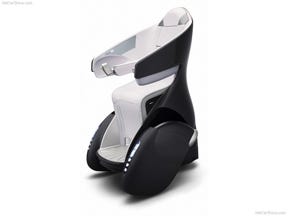October 20, 2009
Already at the leading edge of the environmentally friendly vehicle segment with its Prius hybrid, The Toyota Motor Corp. continues to work at the forefront through incorporation of natural reinforcing fibers in its vehicles.
In fact, Toyota’s use of natural fibers dates back to 1999, when kenaf was used to reinforce a phenolic resin flat door trim in the Toyota Kijang minibus made in Indonesia. Since then, three Toyota vehicles have used kenaf/polypropylene composites in doors trim and seat back board applications, while the 2003 Raum mini MPW employed a truly biodegradable solution in its spare tire cover: polylactic acid (PLA) resin reinforced with kenaf fiber. The durability of kenaf was also put to the test in the 2007 and 2009 Dakar rallies, where the rear quarter windows of the competitor Land Cruisers were blocked out with a kenaf/lignin-based composite.
|
The new Prius model that Toyota debuted this year, however, makes much more extensive use of eco-plastics, employing a PLA-PP alloy in seven components, including the front- and rear-door scuff plates, the cowl side-trim board, and the rear-deck trim cover. Further, the latest Toyota vehicle to embrace biobased materials is the i-Real single person electric “personal mobility vehicle,” debuting at the 2007 Tokyo Motor Show but now in commercial use at the Central Japan International Airport (Centrair) for passenger service and security situations.
“We have gone a step further and employed kenaf/lignin-based composites in structural components as well as panels,” says Dr. Takuya Nishimura, project manager, Development Project, New Business Division, at the vehicle’s designer and manufacturer Toyota Auto Body Co. Ltd. “Fiber orientation is very important to obtain the required strength,” he adds. Toyota has also developed an inmold coating technology to realize smooth panel surfaces that entails injecting a thermosetting resin over panels.
The 2009 edition of the Tokyo Motor Show kicks off October 23 , and Toyota will have at least three hybrids on show, as well as a fuel cell car. —[email protected]
About the Author(s)
You May Also Like



